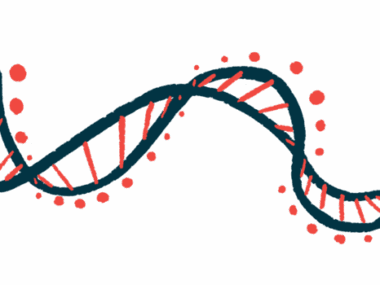Surgical stress can be potential trigger for aHUS: Case report
Hip surgery leads to aHUS episode in woman, 49, in India
Written by |

Hip surgery triggered atypical hemolytic uremic syndrome (aHUS) in a 49-year-old woman, who was successfully treated with plasma exchange, which is a blood-cleaning procedure, and kidney replacement therapy, according to a case study in India.
A prompt diagnosis and multidisciplinary collaboration, as well as early and aggressive treatment of the woman’s kidney disease, were essential for her recovery, researchers noted.
“Through this case, we aim to raise awareness about the potential for surgical stress to trigger aHUS and emphasize the critical role of TPE [therapeutic plasma exchange] and supportive care in the treatment of this rare condition,” researchers wrote.
The case report, “Deciphering Complexity: Atypical Hemolytic Uremic Syndrome Unraveled in the Wake of Elective Hip Arthroplasty,” was published in Cureus.
aHUS is a condition marked by hemolytic anemia, when red blood cells are destroyed faster than they can be made; thrombocytopenia, or low levels of platelets that help the blood to clot; and acute kidney failure.
aHUS caused by overactivation of complement cascade
The disease is caused by an overactivation of the complement cascade, a group of immunological proteins that typically help fight infections. Mutations in complement-regulating genes may predispose a person to develop aHUS, but that alone does not mean the disease will occur.
A complement-activating event, such as pregnancy, infection, and surgery, may trigger the onset of the disease in people with or without mutations. In the India population, a large proportion of aHUS patients have self-reacting antibodies against complement factor H, which regulates the complement pathway.
aHUS treatment mainly involves Soliris (eculizumab), which suppresses the complement cascade, and supportive therapies, including plasma exchange, or plasmapheresis, and dialysis.
Plasma exchange is a blood-cleaning procedure that removes self-reactive antibodies, mutant complement factors, and other disease-causing molecules from a person’s blood. Dialysis, or hemodialysis, is a kidney replacement therapy that filters waste products and water from the blood when the kidneys are no longer able to perform their function.
In the study, researchers in India reported the case of a 49-year-old woman who developed aHUS after hip replacement surgery, in which the diseased parts of the hip joint are removed and replaced with artificial parts.
She was admitted to their hospital with pain in the left hip joint, which imaging scans showed was associated with abnormal bone growths from both the thigh and hip bones.
The woman had a brain cardiovascular event three years before, for which she received physiotherapy. She reported a fall two months after starting physiotherapy, which was managed without invasive procedures.
No known history of autoimmune diseases, kidney conditions
The patient had no known history of autoimmune diseases or kidney conditions.
She was referred for hip replacement surgery. Before surgery, her blood work was normal, including normal levels of platelets, hemoglobin (the protein in red blood cells that transports oxygen), and creatinine (a marker of kidney damage).
A day after a successful surgery, blood tests revealed elevated lactate dehydrogenase, a marker of red blood cell destruction, mildly low hemoglobin levels, thrombocytopenia, and increased levels of creatinine, indicating kidney problems.
Based on these findings, as well as no evidence of other potential causes for her condition, the woman was diagnosed with aHUS.
Ultrasound examination of her urinary system suggested mild damage of the functional parts of the kidneys.
She underwent six cycles of plasma exchange, and three cycles of dialysis. She also received antibiotics for sepsis, or a body’s extreme reaction to an infection.
Condition gradually improved with supportive therapy, symptomatic treatment
The woman’s condition gradually improved with supportive therapy and treatment to help ease symptoms as needed. Particularly, her platelet and hemoglobin levels normalized, and her kidney function improved.
She was discharged after close follow-up with doctors for ongoing monitoring of kidney function.
“The presentation of aHUS in the [post-surgery] period is consistent with previous reports that suggest surgical stress, infections, and other [whole-body] insults can trigger aHUS episodes,” the researchers wrote. “The rapid onset of aHUS symptoms postsurgery highlights the importance of vigilant monitoring and early recognition of this rare condition.”
Moreover, “multidisciplinary collaboration and thorough diagnostic workup were key in ruling out other potential causes and ensuring appropriate treatment,” including plasma exchange and dialysis “to prevent irreversible damage,” the team concluded.








